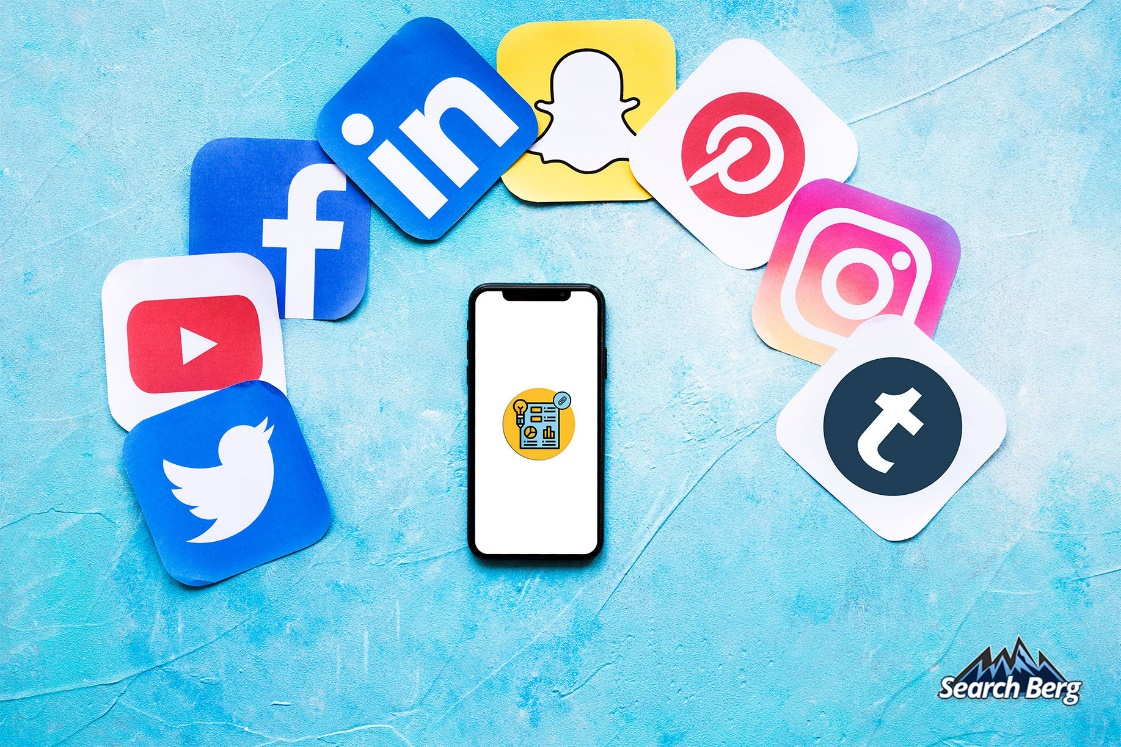SEO Strategy: How To Get Backlinks With Infographics
Getting Backlinks With Infographics and Guestographics
Let’s start with a hard-hitting fact: just the ‘infographic’ hashtag has a weekly reach of over 64,400 people! And whether it’s B2B marketers or people looking for easy instructions for a life hack, infographics are becoming more popular than ever.
Whether it’s infographics that are hosted on your website or value additive guestographics that you customize for high DA platforms, they bring the backlinks rolling in.
Are Infographics Good for SEO?
At this point, it probably won’t shock you when we say that infographics—specifically guestographics—are still far and above one of the best ways to generate high-quality backlinks. They’re easily shareable, actually give people content they care about, and are visually appealing—a content marketing trifecta.
All of this leads to more traffic on your website, and proof for search engines that your domain gives a ton of value to visitors.
Having said this, let’s talk about how your SEO strategy needs to use infographics, so you can generate a ton of backlink juice:
Want to get high-quality infographics made by a team of experts? Fill the form below.
Contents
The Perfect Infographics SEO Strategy: An Essential Guide For Every Business
- Pack Them With Content Value
- Tell a Story With Your Infographics
- Publish Like a Pro
- Generating Backlinks With Guestographics
- The More Shareable the Better
- Types of Infographic Backlinks and How to Acquire Them
- It’s All in the Outreach
- A Smart Approach to Collecting Data
- An Eye For Good Design
- Get Infographics Experts on Board
Infographics and SEO—A Backlink Match Made in Heaven?
The Ultimate Guide to Getting Backlinks With Infographics and Guestographics—Wrapping Up
The Perfect Infographics SEO Strategy: An Essential Guide For Every Business
1. Pack Them With Content Value
We know we sound like a broken record, but value really is at the heart of creating infographics that people actually care about. Your infographic needs to be bursting at the seams with credible data that’s organized in a really helpful manner.
The best players in the biz conduct their own research, but if you don’t have access to that kind of data or the time to put it together, double down on the research process to put information together that people would otherwise have to spend hours to find on their own.
Remember, there’s no such thing as new information; every piece of media on the internet is a clever remix that people can’t help but go back to.
If you want to earn backlinks through infographics, keep these pro tips in mind:
- Keep the data current, so your infographic can remain in circulation for a long time.
- Present credible data, but make sure it doesn’t overwhelm the reader.
- All the information should come together to tell a story.
- The more unique your content, the more likely third parties are to publish it (a prelude to guestographics). The fresher the content, the more likely it is to be successful.
- It always helps to create something that can be the ultimate guide on a specific topic.
2. Tell a Story With Your Infographics
Yes, we’ve alluded to it above, but you’d be gravely mistaken if you thought that was all there was to it when it comes to the world of data storytelling—there’s even a fancy word for it!
So you have your involved data points and what you want to explain, but how do you prevent the latter from drowning in the former? Data storytelling is like an artform that helps you weave together your primary narrative and your data points together seamlessly, making your infographics so much more useful and easier to follow, all while leaving them jam-packed with value additive content.
From a striking color palette and other visual elements to the content itself, every element interplays to create your story. Remember, humans are visual learners—so how you present data to them often matters far more than the substance of the data itself—that’s just how the cookie crumbles.
Need some more context? Here are some tips for your infographics SEO strategy:
- Make sure the font and color scheme complement each other, and that the infographic sticks to them throughout.
- Even the use of charts and boxes needs to conform to the larger aesthetic.
- You can have different text in boxes for visual separation, but don’t make it too much of a departure.
- Don’t crowd the infographic with too much information or too many visual elements.
Here’s a sample that does a really great job at all of the above metrics:

3. Publish Like a Pro
Your work doesn’t end when you’re done crafting the perfect infographic. If you really want it to get you those oh-so-important backlinks with guestographics/infographics, you need to perfect the publishing process, so people can easily link back to you and so it’s super shareable and discoverable.
For now, let’s talk about publishing on your own website, and we’ll move to guestographics in the next section. Follow these steps to generate backlinks using infographics:
- Make a new page on your website for the infographic, so there’s a direct link to it.
- Add a write-up alongside the infographic that serves as both the description, and the SEO optimized text that will help you rank for the appropriate searches on SERPs (If you’re posting it on other websites, change the write-up to match).
- Add embed code so publications can add your infographic to their webpage inline, all while guaranteeing that there’s a direct route to your website.
- Add social share buttons on the page so your infographic gains more traction.
- Don’t forget to add a great call-to-action, telling readers to share your infographic—it guarantees more conversions.
If you hit all of these metrics right, you can expect a ton of shares, and for your infographic to show up on Google Search and Image Search!
4. Generating Backlinks With Guestographics
As big of a deal we make of getting backlinks, here’s something very few people will tell you. The formula for getting them isn’t hard at all. It’s as simple as taking a pinch of great content and adding the right kind of targeting outreach—alongside a great value proposition.
Maybe you’re already emailing hundreds of people daily to get more links to your infographic on your website or even to get it featured on another site or social media feed. But we reckon you’re not getting a lot of link juice if you’re reading this.
If so, it’s time to pay a lot more attention to the words targeted and value proposition. You see, no one will want to feature your content if there’s nothing in it for them; even if the infographic is great, you have to grease some palms before people actually engage with you. Remember, most major platforms are already getting hundreds of people reaching out every day. What makes you different? Are you combining infographics and SEO as seamlessly and ingeniously as you need to?
Let’s take the example of this infographic on SEO:

How do you ensure a ton of backlinks for it; we’re glad you asked:
- Start by finding platforms that post exclusively about SEO—the more they’ve already covered the better.
- Send them a personalized email where you refer to the editor by name, refer to already published content on their website, and then pitch your infographic as something that can augment their already great content (Pro-tip: Don’t be too pushy, ask them if they’d like to see it, don’t always attach it first). Request backlinks through infographics, don’t force them.
- But there’s more! Alongside, offer them even more value by saying you’ll write a mini guest post alongside; this really seals the deal.
Here’s the best part, Google doesn’t always like links without surrounding text, but this method subverts that problem by adding a post around it. A win-win (Three times over!).

There’s a ton of ways to make your infographic easily shareable, and all of them involve reducing the friction (or the time it takes) for a reader to take your infographic and get it on either their social feeds or their blogs.
Here’s a neat example; there’s a WordPress plugin called Image Sharer by Sumo that allows you to add floating social media buttons on all your infographics. It’s a low effort way of guaranteeing that everyone who is inclined to share your post will do so.
And don’t worry, if you’re on a different CMS, there are probably a ton of plugins that you can use to achieve the same thing. And if you have the resources, you can even code your own!
But that’s just the tip of the iceberg; here are some more things you need to do to make your infographic more shareable:
- Generate an embed code for your infographic so all it takes for someone to share it is a small HTML tweak.
- Submit your infographic to high DA (domain authority) infographic submission sites and reap the benefits of their platforms.
- Use platforms like Quora and Reddit to really get buzz around your infographic.
- Try to submit it to other platforms using the instructions in the previous section.
6. Types of Infographic Backlinks and How to Acquire Them

This section will be information-dense, but it’s also a vital one. To know how to generate backlinks using infographics, you need to know what types of backlinks you can get. This will help you target platforms more effectively and optimize your content accordingly, too!
There are six primary types of backlinks you can get for infographics; here’s what they are and what you need to know about them:
Links From Blog Comments
These backlinks come either from you or a reader posting the infographic link in the comments of other blogs that cover a similar topic to what your infographic covers.
They’re a really high traffic driver because people love soliciting other people’s opinions on content pieces they loved, so they’re sure to peruse the comments at least once.
Links From Topic Specific Forums
Yes, this also includes platforms like Reddit and Quora. People who look for specific answers to specific problems, or people who love a certain topic are very likely to click through to links that will help them.
And yes, while most of these will be nofollow links, they will generate more traffic to your website.
Links From Guestographics
We won’t dwell on this because it’s been covered above, but remember that you have an ulterior motive when writing your guest post; try to include an author bio section at the end so people know where the infographic came from.
Links From Google Image Search
You can use Google Image Search to find out who’s using your infographic without linking to it; once you identify these people, send out a mass email asking them nicely to add a link so you don’t miss out on any quality backlinks.
Directory Links
Again, we’ve talked about this once above; it’s a tried and tested way of getting links from sites that probably have a much bigger reach than yours.
Editorial Links
This is your white whale, and just like Melville’s Moby Dick, it’s going to be a tough one to catch. You might have to invest in first-hand research, and you’ll have to put your best foot forward for industry giants to use your infographics in their content. The payoff is more than worth it, though.
7. It’s All in the Outreach
Outreach isn’t a monolith; it’s every method you use to put your infographic out there. And you need to take an all-of-the-above approach when it comes to marketing.
From leveraging all of your socials to building backlinks with guestographics, you need to fire on all cylinders. The best of the best have entire outreach times dedicated to finding link opportunities while also optimizing infographics for organic SEO.
And if you don’t have the budget for that, reach out to the professionals!
Want to ensure that your infographic has a sizable reach and brings in a ton of traffic? Fill the form below.
8. A Smart Approach to Collecting Data
Finding the right data is a matter of knowing where to look, and finding data that really jumps out at readers.
To dwell on the latter, let’s look at two examples:
22% of marketers use Facebook to increase sales
vs.
22% of marketers claim that Facebook has increased sales two-fold
Is the difference clear to you? It’s night and day for most people. The latter is specific, and mentions a metric that business owners really care about. The first is vague, and holds no special interest for any group of people.
Second, really hone in on official sources that hold a lot of credibility. This means going down the Google Scholar rabbit hole, official sources with .edu or .org in their URL, and even studies commissioned by other players in your industry who aren’t competitors.
The goal is to gather a vast array of data points that all complement each other, allowing you to build on the primary message behind your infographic in succession.
9. An Eye For Good Design
We’re not going to beat around the bush; 50% of marketers primarily use visual marketing in their content, but 24% say that design is their biggest challenge. There’s no getting around it, people appreciate visual content more than ever, and they’re hypersensitive to a bad aesthetic.
If you want your infographics SEO strategy to yield stellar results, you need to have:
- A cohesive style when it comes to color palette, text, and spacing.
- Complementary visual elements that embody the same style ethos.
- A logical flow that’s easy on the eyes and makes the infographic accessible.
- Succinct text that doesn’t dwell, and makes the infographic punchy.

10. Get Infographics Experts on Board
It really is in your best interests to hire infographics experts in the long-term. They can help you develop a long-term strategy that takes an omnichannel approach, while also optimizing for each platform keeping best practices in mind.
It’s a win-win scenario, because freeing up resources that would be otherwise spent on infographics will open you up to generating revenues using core business activities.
Need our experts to really take your infographics to the next level? Fill out the form below.
Infographics and SEO—A Backlink Match Made in Heaven?
Infographics are an SEO powerhouse, no question about it. Whether they’re hosted on your primary website, or they’re used to generate backlinks from authoritative domains, there’s no better way to get high volume returns on your content investments.
Infographics can also potentially go viral, meaning you could have a major breakthrough on your hands if you play your infographics SEO strategy cards right.
The Ultimate Guide to Getting Backlinks Through Infographics and Guestographics—Wrapping Up
In this blog, we walked you through the steps to generate backlinks using infographics. Now it’s time to put these strategies into practice! If your small business really needs to get its infographics game going, it’s time to take your infographics SEO strategy up a notch!
Knowing how to promote your infographics will take you a long way, but you really do stand to benefit by aligning yourself with one of the best digital marketing agencies in the U.S. Are infographics good for SEO? Absolutely. Can your plans fall flat if you don’t partner with the right company? Unfortunately, yes. At Search Berg, we completely manage every aspect of your infographics strategy—from design to publishing and even SEO optimization, so you don’t have to worry about a thing!
For more information about our services, call 855-444-4777.














